As we head into late summer, balancing a busy schedule with healthy eating can be difficult. Here are three quick and easy dinner recipes you can make in less than 30 minutes, giving you more time for fun summer activities!
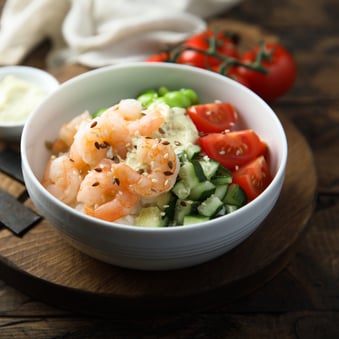 Shrimp Sushi Bowl
Shrimp Sushi Bowl
Servings: 4
5 TB light mayonnaise
2 tsp red curry paste
10 ounces (2 standard packages) frozen riced cauliflower
3 TB sesame oil
1½ lbs uncooked shrimp, peeled and deveined
2 garlic cloves, minced
1 tsp salt
1 medium ripe avocado, seeded, peeled, and sliced
1 medium cucumber, sliced
½ cup julienned carrots
2 green onions, thinly sliced
1 lime, sliced into wedges
- In a small bowl, mix mayonnaise and red curry paste.
- Prepare riced cauliflower according to package directions.
- In a large skillet, heat oil over medium heat. Add shrimp and cook until pink, or about 5–7 minutes. Add garlic and salt and cook for 1 additional minute. Remove from heat.
- Divide cauliflower among 4 bowls. Top each bowl with shrimp, avocado, cucumber, carrot, and green onion. Drizzle each bowl with curry mayonnaise mixture and garnish with lime.
Nutrition Facts: 377 calories, 22g total fat (3.5g saturated fat), 14g carbohydrate (5g fiber, 4g sugar) and 32g protein.
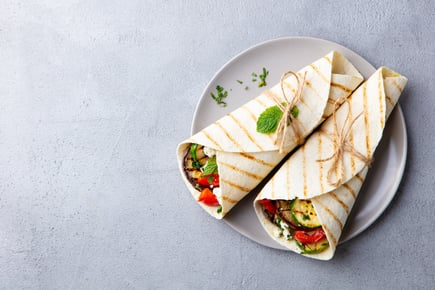 Grilled Zucchini Hummus Wrap (Vegan)
Grilled Zucchini Hummus Wrap (Vegan)
Servings: 2
1 zucchini, sliced
Salt and pepper, to taste
1 TB olive oil
1 medium tomato, sliced (or 1 handful cherry tomatoes)
⅛ cup sliced red onion
1 cup kale
2 slices white cheddar cheese
2 large tortillas
4 tablespoons hummus (any flavor)
- Heat a skillet over medium heat.
- Toss zucchini in olive oil and sprinkle with salt and pepper. Add to skillet and cook for 3 minutes before flipping and cooking for an additional 2 minutes.
- Remove zucchini from skillet and reduce heat to low. Heat tortillas one at a time in skillet for 1 minute each.
- Remove tortillas from skillet and assemble wraps with sliced zucchini, tomato, onion, kale, 1 slice of cheese, and 2 TB hummus. Wrap tightly and serve.
Nutrition Facts: 366 calories, 20g total fat (6g saturated fat), 660mg sodium, 38g carbohydrates (7.5g fiber, 6g sugar), and 13.5g protein.
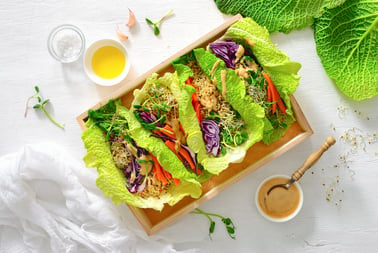 Chicken and Cucumber Lettuce Wraps with a Simple Peanut Sauce
Chicken and Cucumber Lettuce Wraps with a Simple Peanut Sauce
Servings: 4 (2 lettuce wraps per serving)
¼ cup creamy peanut butter
2 TB low-sodium soy sauce
2 TB honey
2 TB water
2 tsp toasted sesame oil
2 tsp olive oil
3 scallions, sliced (separate whites and greens)
1 Serrano pepper, seeded and minced
1 TB minced fresh ginger
2 tsp minced fresh garlic
16 ounces ground chicken breast
1 cup diced jicama
16 Bibb lettuce leaves
1 cup cooked brown rice
½ medium English cucumber, thinly sliced
½ cup fresh cilantro
lime wedges, for serving
- Whisk peanut butter, soy sauce, honey, water, and sesame oil in a small bowl.
- In a large nonstick skillet, heat olive oil over medium heat. Add scallion whites, Serrano pepper, ginger, and garlic and cook until slightly soft, or about 2 minutes. Add chicken and cook until cooked through, about 3–4 minutes.
- Add the peanut sauce to the chicken mixture and cook until sauce has thickened, about 3 minutes. Remove from heat and stir in jicama and scallion greens.
- Prepare lettuce wraps by dividing rice, chicken mixture, cucumber, and cilantro among the each lettuce leaves. Serve with lime wedge garnish.
- Nutrition Facts (per 2 lettuce wraps with sauce): 495 calories, 19g fat (4g saturated fat), 400mg sodium, 39g carbohydrates (6.5g fiber, 14g total sugar, 8.5g added sugar), 44g protein.
This blog was written by Lindsey Recker, MS, Registered Dietitian. To learn more about the NIFS bloggers, click here.


 It’s no secret that our emotions impact what we eat, when we eat, and how much we eat. In fact, sometimes it seems that the strongest cravings hit when our emotional and mental well-being is at its weakest. Emotional eating is a way to, in the short term, relieve or suppress negative feelings, such as sadness, stress, anger/frustration, or boredom. However, emotional eating can also lead people to make poor choices, such as skipping or forgetting meals, consuming fast food frequently, or consuming alcohol or caffeine in excess, all of which may have health consequences, including unintentional weight gain.
It’s no secret that our emotions impact what we eat, when we eat, and how much we eat. In fact, sometimes it seems that the strongest cravings hit when our emotional and mental well-being is at its weakest. Emotional eating is a way to, in the short term, relieve or suppress negative feelings, such as sadness, stress, anger/frustration, or boredom. However, emotional eating can also lead people to make poor choices, such as skipping or forgetting meals, consuming fast food frequently, or consuming alcohol or caffeine in excess, all of which may have health consequences, including unintentional weight gain.  1. Do make a plan to manage your stress level.
1. Do make a plan to manage your stress level. Did you know
Did you know  As the weather turns colder and we spend more time indoors, viruses will become more active among the population. Healthy eating can help you boost your immunity. Here are five of the top choices for fighting colds and flu with food.
As the weather turns colder and we spend more time indoors, viruses will become more active among the population. Healthy eating can help you boost your immunity. Here are five of the top choices for fighting colds and flu with food.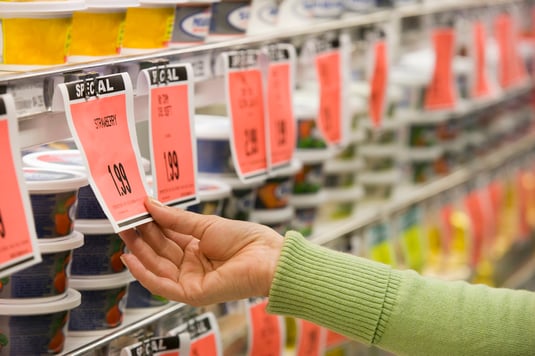 With inflation at a 40-year high and grocery costs up close to
With inflation at a 40-year high and grocery costs up close to 

 Sodium is a mineral and electrolyte that helps balance the amount of fluid and other minerals in your body. It also plays an important role in nerve and muscle function. The terms “sodium” and “salt” are typically used interchangeably; however, sodium is a mineral and one of the chemical components found in salt (also called sodium chloride). Sodium is found naturally in some foods, and added to others for flavor or preservation.
Sodium is a mineral and electrolyte that helps balance the amount of fluid and other minerals in your body. It also plays an important role in nerve and muscle function. The terms “sodium” and “salt” are typically used interchangeably; however, sodium is a mineral and one of the chemical components found in salt (also called sodium chloride). Sodium is found naturally in some foods, and added to others for flavor or preservation.  While having a New Year’s Resolution to “lose more weight” isn’t a bad thing, it’s not easy. And depending on how much you want to lose and in what time frame, it’s not always realistic. To benefit your overall health without focusing on your weight, try setting (and sticking to) some of the following nutrition-related resolutions going into 2023.
While having a New Year’s Resolution to “lose more weight” isn’t a bad thing, it’s not easy. And depending on how much you want to lose and in what time frame, it’s not always realistic. To benefit your overall health without focusing on your weight, try setting (and sticking to) some of the following nutrition-related resolutions going into 2023.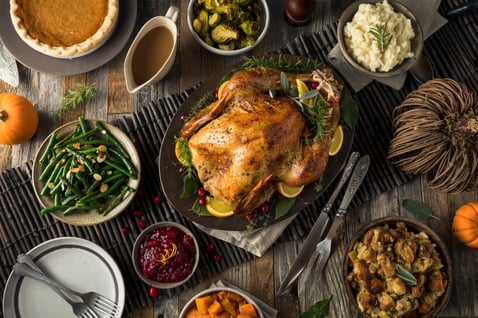 Although the holidays are meant to be a time of joy, they can be stressful for some, especially when you’re trying to lose or maintain weight, or just be more conscious of your eating habits. The best way to avoid these health-related stressors during the holidays is to prepare for them.
Although the holidays are meant to be a time of joy, they can be stressful for some, especially when you’re trying to lose or maintain weight, or just be more conscious of your eating habits. The best way to avoid these health-related stressors during the holidays is to prepare for them.